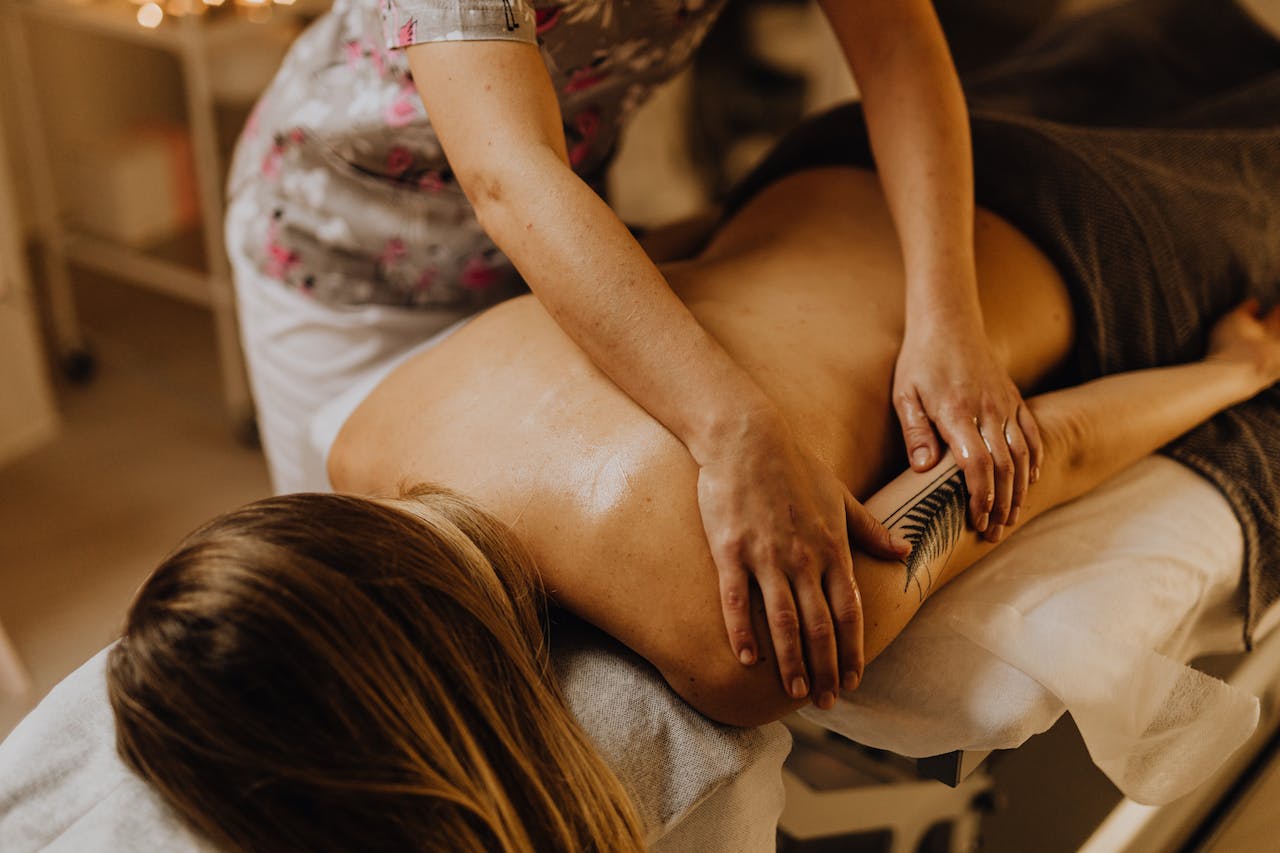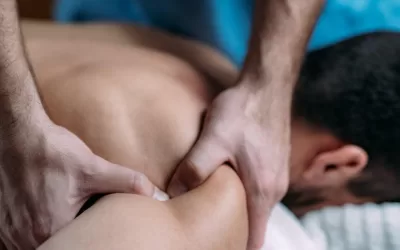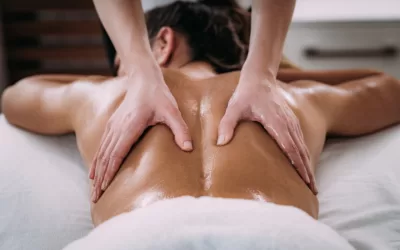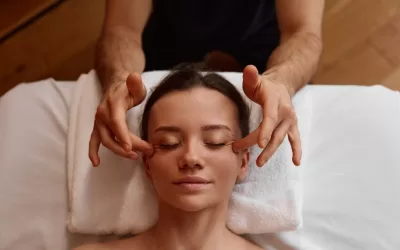Tui Na massage, a traditional Chinese therapy, isn’t just your typical relaxing rub-down. Unlike the gentle strokes of Swedish , Tui Na involves deep tissue manipulation, acupressure, and realigning the body’s energy flow. This ancient practice is rooted in the principles of Traditional Chinese Medicine (TCM), focusing on meridians, acupoints, and massage therapies to alleviate pain and promote overall wellness.
But what sets Tui Na apart from other forms of massage? Reflexology’s underlying mechanism lies in stimulating specific points on the body to address imbalances and blockages, promoting circulation while targeting muscle tension. By understanding how reflexology harnesses the body’s natural healing abilities, we can delve into its effectiveness for addressing various health concerns.
Understanding The Techniques Used In Tui Na Therapy
Various Techniques
Tui Na therapy incorporates a range of techniques to address both physical and internal health issues. These techniques include kneading, rolling, and acupressure. Through these methods, practitioners aim to manipulate the body’s energy flow, promoting overall well-being. Kneading, practice, people
Acupressure targets specific points on the body to alleviate pain or discomfort by applying pressure. This technique is based on the same principles as acupuncture but uses finger pressure instead of needles. By stimulating these points through targeted pressure, practitioners can help restore balance to the body’s energy flow.
Focus On Energy Realignment
The primary focus of Tui Na therapy is to realign people’s energy flow through precise hand movements and pressure application. Practitioners believe that when this vital energy becomes blocked or unbalanced, it can lead to various health issues such as pain or illness. Therefore, by using specific techniques like rolling and pressing along the meridians (energy pathways), people aim to restore harmony within the body.
The Role Of Qi In Traditional Chinese Medicine
Understanding Qi
In Traditional Chinese Medicine (TCM), Qi is considered the body’s vital life force, a form of energy that flows through the body’s meridians. It is believed to be essential for maintaining good health and overall well-being. When the flow of Qi is disrupted or imbalanced, it can lead to various health issues such as pain, discomfort, or illness.
Tui Na therapy focuses on addressing these disruptions in the flow of Qi throughout the body. By doing so, it aims to restore balance and promote healing within an individual’s entire being.
Correcting Imbalances With Tui Na Massage
Tui Na massage targets specific points and areas where blockages or imbalances in Qi are believed to occur. Through various techniques such as kneading, pressing, and stretching specific meridian points on the body, Tui Na practitioners aim to release these blockages and restore smooth energy flow throughout the body.
By addressing these disruptions in energy flow, Tui Na massage strives to alleviate physical discomforts caused by poor circulation of Qi. For example:
- A person experiencing headaches due to stress-induced tension might benefit from Tui Na massage aimed at releasing blocked energy around their neck and shoulders.
- Similarly, someone suffering from digestive issues could seek relief through targeted abdominal Tui Na techniques intended to promote better digestion by clearing any stagnation in their digestive system’s energy pathways.
Through its focus on promoting balanced energy flow within an individual’s body systems, this traditional therapeutic approach aims not only at alleviating symptoms but also at treating underlying causes of ailments.
The Holistic Approach
The holistic nature of TCM views each person as a complex system where physical health is intertwined with emotional well-being. Therefore, when restoring balance through Tui Na massage techniques targeting Qi disturbances within specific meridians related not just physically but emotionally too.
- An individual receiving treatment for lower back pain may find that along with reduced physical discomforts they experience improved emotional well-being resulting from restored harmony between different aspects of themselves.
- Likewise, someone seeking relief from anxiety-related symptoms may notice both mental calmness alongside improvements in related physiological concerns after undergoing sessions focusing on balancing relevant meridian points associated with emotional regulation.
This holistic approach emphasizes how addressing energetic imbalances can positively influence multiple dimensions—physical comfort levels alongside mental-emotional states—contributing towards an overall sense of wellness.
Differentiating Tuina From Other Massage Techniques
Principles Of TCM And Qi Flow
Tui Na massage stands out from other massage techniques like Swedish or deep tissue because it integrates the principles of Traditional Chinese Medicine (TCM). Unlike Western massages, Tui Na focuses on the concept of Qi, which is believed to be the vital energy that flows through the body along specific pathways called meridians. By incorporating TCM principles, Tui Na aims to balance and enhance the flow of Qi in the body to promote healing and overall wellness.
Tui Na therapists utilize pressure techniques combined with specific hand movements to manipulate the body’s soft tissues and acupressure points. These techniques are not commonly found in other massage modalities. The application of pressure on these acupressure points is intended to stimulate the flow of Qi, release tension, and address various health concerns. For example, a therapist may use pressing, kneading, or stretching techniques on certain acupressure points corresponding to different organs or areas of discomfort.
Holistic Approach
One key aspect that sets Tui Na apart from Western massage techniques is its holistic approach. While Swedish or deep tissue massages primarily focus on relieving muscle tension and promoting relaxation through physical manipulation alone, Tui Na considers both physical symptoms and their underlying causes within a broader framework. In addition to addressing musculoskeletal issues such as neck pain or tight shoulders, Tui Na also takes into account emotional well-being by aiming to restore harmony between mind and body.
Unveiling The Science Behind Tui Na Massage
Endorphin Stimulation And Inflammation Reduction
Tui Na massage has been found in studies to have the potential to stimulate the release of endorphins, which are natural pain-relieving hormones. This stimulation can lead to a sense of well-being and relief from discomfort. Research suggests that Tui Na may contribute to reducing inflammation in the body. By applying specific finger pressure techniques, Tui Na practitioners can target areas of tension or soreness, potentially leading to decreased inflammation and improved comfort for the recipient.
Tui Na’s effects on the nervous system and circulation have captured scientific interest due to its potential impact on promoting relaxation and enhancing blood flow. These effects can contribute to an overall sense of well-being while also aiding in recovery from physical exertion or injury.
Influence On Gene Expression Related To Immune Function
Recent research indicates that Tui Na may influence gene expression related to immune function and pain modulation. This finding suggests that this traditional Chinese massage method could play a role in supporting the body’s natural defense mechanisms against illness or injury while also helping manage discomfort associated with various conditions.
The combination of these scientifically observed effects showcases how Tui Na operates beyond merely providing temporary relief – it has the potential for deeper physiological impacts within the physical body.

Evaluating The Effectiveness Of Tui Na Massage
Promising Results
Clinical trials have shown promising results for conditions like chronic neck pain and migraines. Patients who underwent Tui Na massage sessions reported significant improvements in mobility, pain relief, and overall well-being. For example, a study published in the Journal of Alternative and Complementary Medicine found that Tui Na massage was effective in reducing neck pain intensity and improving cervical range of motion.
Tui Na massage has also been found to be beneficial for individuals suffering from migraines. In a randomized controlled trial published in the Journal of Traditional Chinese Medicine, participants who received Tui Na treatments experienced a reduction in both the frequency and intensity of their migraine attacks.
Traditional Knowledge And Modern Research
The effectiveness of massage therapies such as Tui Na is supported by both traditional knowledge and modern research findings. This ancient form of Chinese therapeutic massage has been practiced for centuries based on the principles of Traditional Chinese Medicine (TCM). According to TCM theory, stimulating specific acupressure points through techniques used in Tui Na can help restore the balance of qi (vital energy) within the body, leading to improved health outcomes.
Modern research has provided further support for these traditional claims. For instance, a meta-analysis published in Evidence-Based Complementary and Alternative Medicine reviewed multiple studies on the efficacy of Tui Na massage for various health conditions. The analysis revealed that Tui Na was associated with significant improvements in pain relief across different patient populations.
Addressing Common Conditions Treated By Tui Na Massage
Alleviating Back Pain
Tui Na massage can effectively address back pain by targeting specific acupressure points and using various techniques to release tension in the muscles. By applying pressure and manipulation, it helps improve blood circulation, reduce inflammation, and alleviate discomfort.
Tui Na is commonly used for managing arthritis symptoms. The specialized massage techniques can help increase joint mobility, reduce stiffness, and minimize pain associated with arthritis. This therapy aims to promote overall well-being while addressing the specific concerns related to arthritis.
Managing Stress-Related Tension
One of the key benefits of Tui Na massage is its ability to relieve stress-related tension. Through targeted pressure on certain points of the body, this form of Chinese therapeutic massage helps release built-up stress and relax tense muscles. It promotes a sense of calmness and relaxation, contributing to overall mental well-being.
The therapy also demonstrates potential in managing conditions such as anxiety by promoting relaxation through gentle yet firm manipulation techniques that stimulate the body’s natural healing processes.
Supporting Digestive Health
Tui Na has been found effective in addressing digestive issues, such as nausea or other gastrointestinal discomforts. By focusing on specific pressure points related to digestive health, this form of massage can help alleviate symptoms like bloating or indigestion through targeted stimulation.
Moreover, it targets any potential energy blockages within the body that may be contributing to digestive disturbances while promoting better circulation and enhancing overall digestive function.
Rehabilitation From Sports Injuries
In addition to common health concerns like back pain or anxiety management, Tui Na is widely employed for supporting rehabilitation from sports injuries. Its focus on deep tissue manipulation aids in accelerating recovery from muscular strains or sprains commonly associated with physical activities. This specialized form of therapeutic massage plays a crucial role in alleviating musculoskeletal disorders by targeting affected areas with precision and employing techniques designed specifically for rehabilitation purposes.
Potential Side Effects And Risks Of Tui Na Massage
Mild Soreness And Bruising
After intense sessions, some individuals may experience mild soreness or bruising. This is a common side effect that occurs due to the deep tissue manipulation involved in this type of massage. The pressure applied during the massage can sometimes lead to temporary discomfort and tenderness in the treated areas.
It’s important to note that these effects are usually temporary and should subside within a few days. They are often considered normal reactions as the body adjusts to the manipulation it has undergone during the massage session. However, if these symptoms persist or worsen over time, it’s advisable for individuals to seek advice from their healthcare provider.
Improper Application Of Techniques
Improper application of Tui Na techniques could potentially lead to discomfort or exacerbation of existing conditions. If not performed correctly, certain manipulations may cause injury or strain on muscles and tissues. For instance, excessive force or incorrect positioning during a massage can result in muscle soreness or even minor injuries such as strains.
To mitigate these risks, it’s crucial for individuals seeking Tui Na therapy to ensure they receive treatment from qualified practitioners who have extensive training and experience in this form of therapeutic massage. Properly trained professionals understand how to apply various techniques safely while minimizing potential adverse effects on their clients’ bodies.
Importance Of Consultation For Certain Health Concerns
For individuals with certain health concerns, consulting a qualified practitioner before undergoing Tui Na therapy is essential. Conditions such as osteoporosis, arthritis, fractures, severe sprains, open wounds or burns necessitate careful consideration before engaging in any form of deep tissue manipulation like Tui Na massage.
Consulting with a healthcare professional helps identify any contraindications that might make Tui Na therapy unsuitable for specific individuals based on their medical history and current health status. It also allows practitioners to tailor their approach according to each client’s unique needs while ensuring safety throughout the treatment process.
Regulation And Organizations In Tui Na Massage Therapy
Certification And Accreditation
Various professional organizations provide certification and accreditation for Tui Na practitioners. These bodies ensure that therapists meet specific training standards, adhere to ethical guidelines, and possess the necessary skills to practice safely. By obtaining certification from reputable organizations, such as the National Certification Commission for Acupuncture and Oriental Medicine (NCCAOM), Tui Na practitioners demonstrate their commitment to upholding industry best practices.
Seeking treatment from a licensed and reputable Tui Na therapist is crucial for ensuring adherence to established standards. Patients can verify a therapist’s credentials by checking if they are certified by recognized organizations or have undergone formal training from reputable institutions. This helps guarantee that the practitioner has acquired the essential knowledge of systems within the body, along with specialized techniques unique to Tui Na massage.
Regional Regulations
Regulations governing the practice of Tui Na vary across different regions and countries. While some areas may have comprehensive regulations in place, others might have more relaxed oversight. It’s important for individuals seeking Tui Na therapy to be aware of these variations in regulations, especially if they are considering treatment abroad or in a different state or province.
In some jurisdictions, Tui Na may fall under broader regulations covering complementary and alternative medicine practices while other regions may specifically address it within traditional Chinese medicine frameworks. Understanding these regional differences can help patients make informed decisions about their care while also ensuring that practitioners comply with local laws regarding regulation of therapeutic practices.
Summary
You’ve now delved into the fascinating world of Tui Na massage, uncovering its unique techniques, the role of Qi in traditional Chinese medicine, and its effectiveness in treating various conditions. By understanding the science behind Tui Na massage, you’ve gained insights into how this ancient practice aligns with modern concepts of anatomy and physiology. Evaluating its potential side effects and risks has equipped you to make informed decisions about incorporating Tui Na into your wellness routine.
Now that you grasp the essence of Tui Na massage, consider scheduling a session with a qualified practitioner to experience its benefits firsthand. Whether you seek relief from specific ailments or simply aim to enhance your overall well-being, Tui Na may offer a holistic approach to address your needs. Embrace the opportunity to explore this time-honored practice and unlock its potential to rejuvenate your mind, body, and spirit.
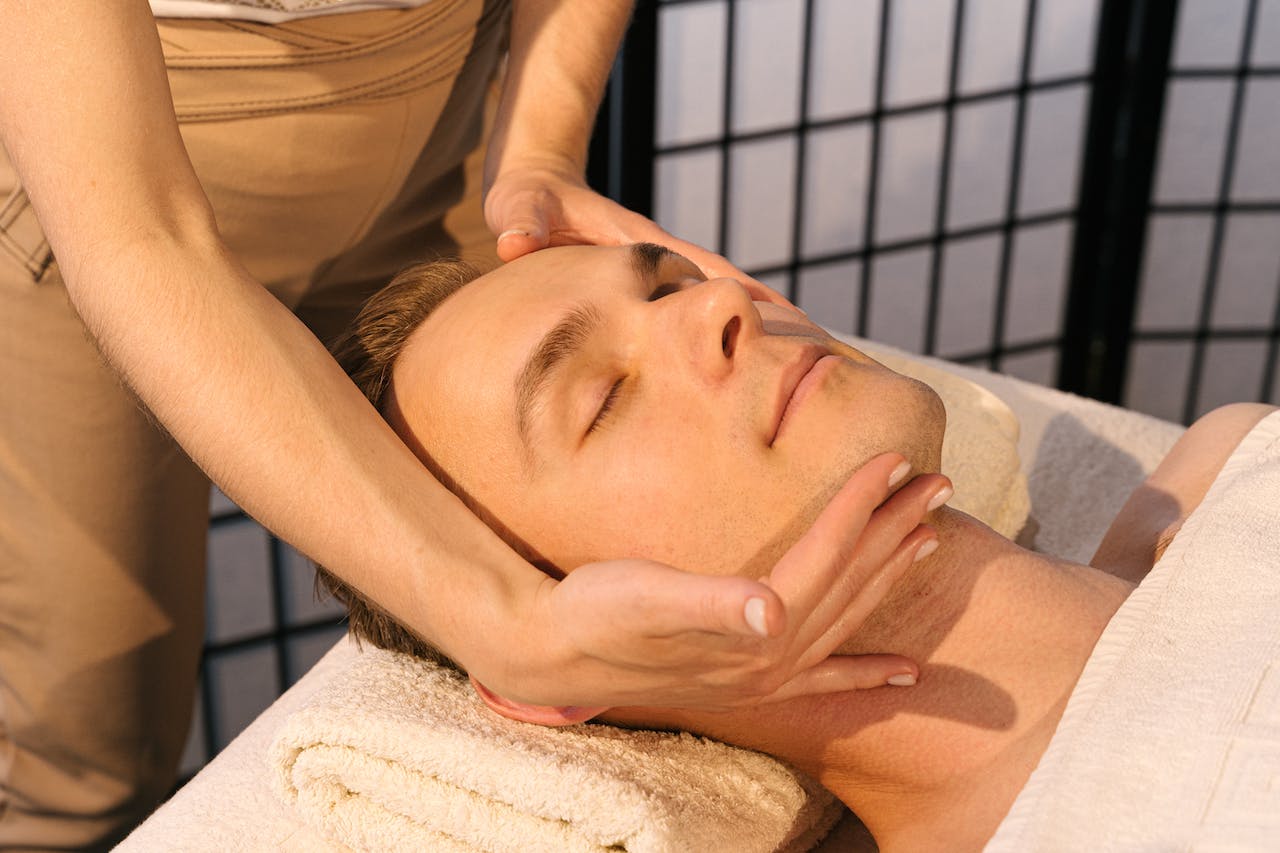
Discover The Healing Power Of Tui Na Massage: Experience Wellness With Medicinevolution’s Expertise!
Are you struggling with the persistent discomfort of chronic pain, seeking solace from muscular tension, and in need of effective relief? MedicinEvolution is at the cutting edge of combining Tui Na massage techniques with holistic pain management, offering you revolutionary healing methods. By harnessing the ancient wisdom of Tui Na massage, MedicinEvolution targets the core sources of your muscular and joint pain, enabling a more thorough and impactful healing journey. Say goodbye to the limitations of muscle stiffness, chronic soreness, and the daily strain affecting your well-being—as MedicinEvolution delves into the art of Tui Na, guiding you toward significant recovery. Their specialized methods are crafted to transition you away from the relentless discomfort and physical challenges that have been compromising your life’s enjoyment.
If you’re dealing with ongoing muscle stiffness, joint pain, or the exasperating constraints of chronic discomfort, MedicinEvolution’s personalized approach, rooted in the traditional practices of Tui Na massage, is uniquely tailored to your specific needs. Don’t let the burden of physical pain narrate your life’s story—take the initiative and arrange your consultation with MedicinEvolution today! Begin a transformative journey with their Tui Na-based pain management techniques and start progressing towards a more dynamic, pain-free life. Your body and spirit, freed from the grip of pain, will undoubtedly feel rejuvenated!

